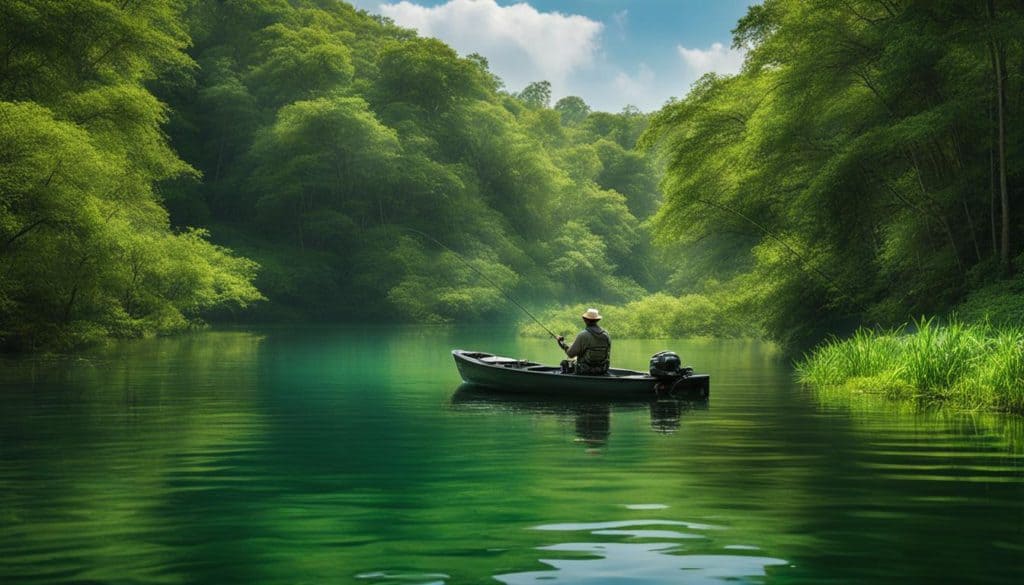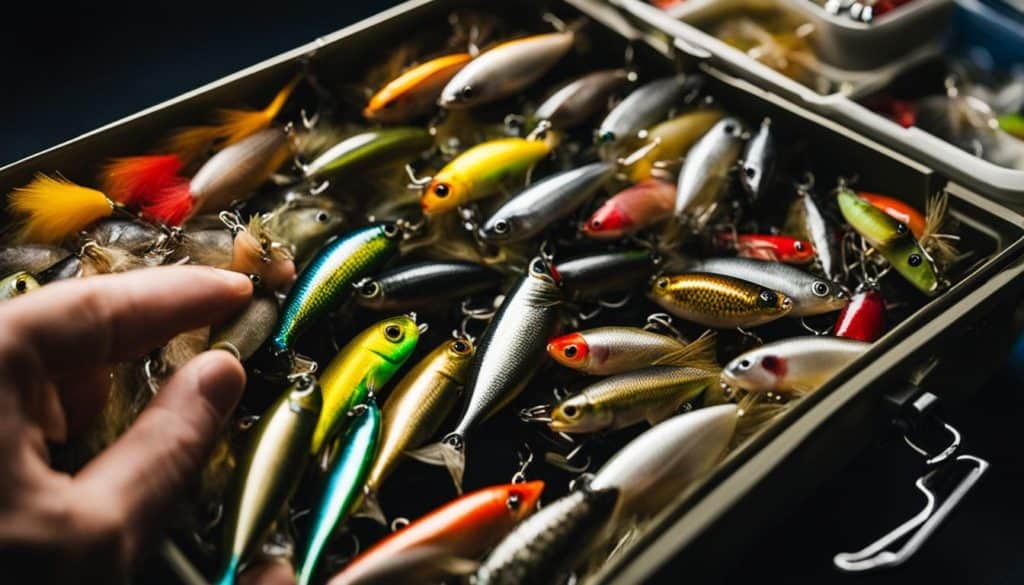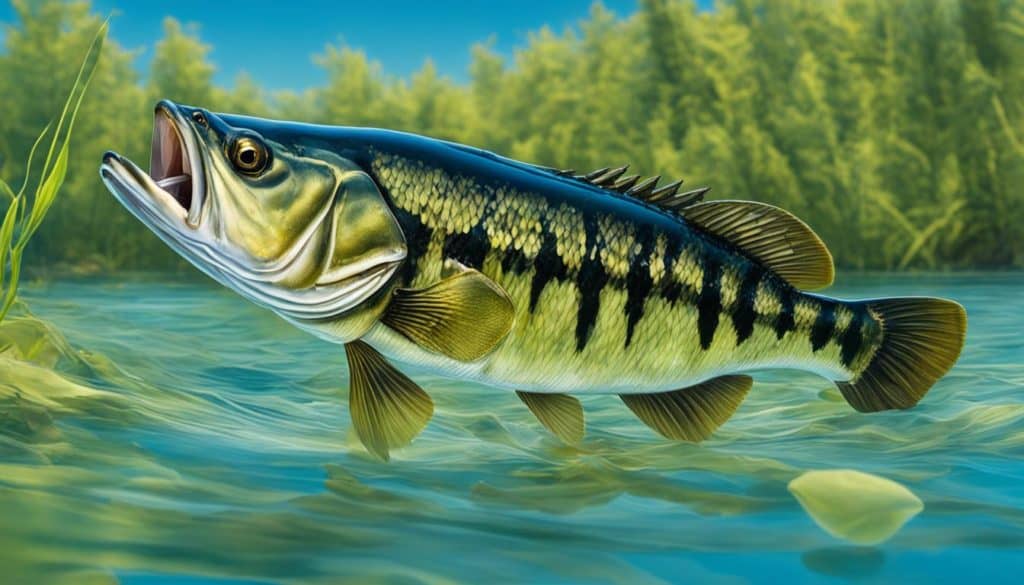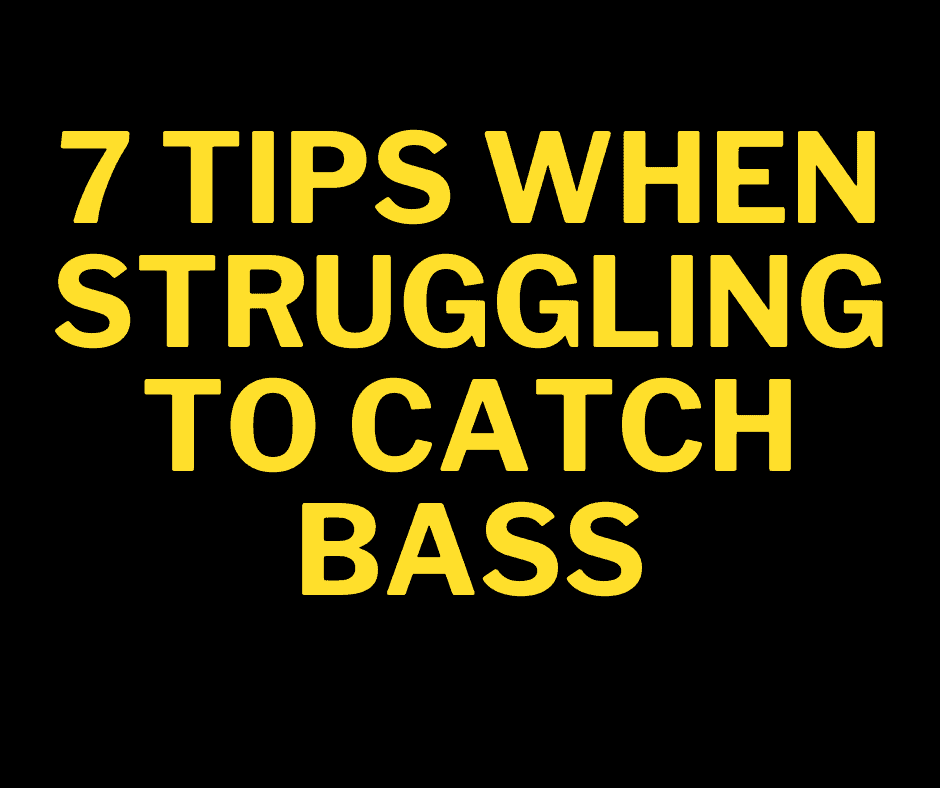If you’re an avid angler, you know how difficult it can be to catch bass when they’re not biting. Even the most experienced fishermen can find themselves struggling to catch bass. It’s important to remember that bass fishing isn’t just about luck – it’s a science. By learning the right techniques and strategies, you can significantly improve your chances of success on the water. In this section, we’ll provide you with 7 tips and bass fishing advice to help you turn your luck around when you’re struggling to catch bass.
Key Takeaways
- Choosing the right fishing spot is crucial when it comes to bass fishing.
- The choice of lures and baits greatly impacts your bass fishing success.
- Having good casting skills can make a significant difference in your ability to catch bass.
- To successfully catch bass, it’s important to understand their behavior and habits.
- Experiment with retrieve speeds and depths to find the right combination that triggers a bite.
Choose the Right Fishing Spot
If you want to stop struggling to catch bass, it’s essential to choose the right fishing spot. To do this, you need to understand where and why bass are likely to be found.
Look for Structure
Bass tend to hold close to structures like rocks, stumps, logs, and brush piles. By casting near these structures, you increase your chances of catching a fish. A simple rule to follow is if it looks like it holds a bass, it most likely does. Don’t be afraid to keep casting and using different lures around that structure.
Find Cover
Bass also tend to hold close to cover like weeds, lily pads, and fallen trees. Use different techniques to fish over weed beds and other vegetation. Topwater and soft plastics for example, are an excellent choice for fishing along weed lines.
Consider Water Temperature
Bass are also influenced by water temperature. The table below should serve as a rough guideline on areas to target and what lures to throw during those specific temperatures.
| Water Temperature (°F) | Bass Behavior | Recommended Strategies |
|---|---|---|
| Below 50 | Lethargic, slow-moving | Slow presentations, deep water lures |
| 50-55 | Beginning to feed more | Jerkbaits, jigs in shallower areas |
| 55-60 | More active, pre-spawn | Spinnerbaits, crankbaits near covers |
| 60-65 | Spawning begins | Soft plastics in shallow nesting areas |
| 65-70 | Post-spawn, active feeding | Topwater lures, fast-moving baits |
| 70-75 | Good overall activity | Variety of lures, focus on structure |
| 75-80 | Summer patterns, deeper areas | Deep diving crankbaits, drop shots |
| Above 80 | Slower in hot water | Early morning/late evening bites, shade |

Use the Right Lures and Baits
Choosing the right lures and baits is essential to stop struggling to catch bass. Here are some tips to help you select the perfect one based on the fish’s behavior and the water conditions:
- Variety is key: Keep several types of lures and baits on hand to switch things up during your fishing trip. Sometimes bass are more attracted to certain colors, while other times they prefer a specific type of bait.
- Match the hatch: Observe the type of baitfish present in the area and use a similar-looking lure or bait. Bass will often mimic their prey, so this technique can increase your chances of catching them. While there are exceptions, if you are throwing a 12 inch sized trout glide bait in a pond that only has 4 inch bluegill, you are severely reducing your chances of catching fish.
- Consider the time of day: Use brighter colors and larger baits during the day and switch to darker, more subtle colors at night when visibility is lower.
- Use natural scents: Apply scent to your lures and baits to make them more attractive to bass. Some scents mimic the smell of baitfish, while others can stimulate the fish’s senses and trigger a strike.
Choosing the Right Lure
Each type of lure has its own unique characteristics that can be used to attract bass in different ways. Here are some common types of lures:
| Type of Lure | Description | When to Use |
|---|---|---|
| Crankbait | A hard-bodied lure that vibrates when retrieved and mimics the action of swimming baitfish. | Best in shallow waters or when bass are actively feeding on baitfish. |
| Jig | A weighted hook paired with a rubber or silicone skirt that mimics a crawfish or other bottom-dwelling prey. | Great for fishing around structure, particularly in deeper water. |
| Spinnerbait | A lure with a metal blade that spins when retrieved, imitating the flash and vibration of baitfish. | Works well in murky water or low light conditions. |

Presentation Techniques
Once you’ve chosen the right lure, it’s important to know how to present it to the bass effectively. Here are a few techniques to keep in mind:
- Vary your retrieval speed: Try different retrieval speeds to mimic the natural swimming speed of baitfish and trigger a reaction from bass.
- Use pauses: Pause your bait intermittently during the retrieve to imitate injured prey and make your lure more attractive to bass.
- Experiment with depth: Change the depth at which you’re fishing by adjusting the weight of your lure or using a different presentation technique.
By utilizing the right lures and presentation techniques, you’ll greatly increase your chances of catching more bass. Keep in mind that what works one day may not work the next, so don’t be afraid to switch things up until you find the winning combination.
Master Different Casting Techniques
When it comes to bass fishing, casting skills are crucial. The right technique can increase accuracy and distance, resulting in more bites. Some bass fishing strategies include:
- Flipping: Pitching is a technique used for precise, quiet casting to target specific areas, often where bass are hiding, like under cover or near structure. It involves letting out enough line so it’s equal to the length of the rod, holding the bait in one hand, and using the rod to swing the bait out towards the target. The lure enters the water with minimal splashing, making it ideal for spooking less fish and for fishing in clear water or pressured areas.
- Pitching: Flipping is similar to pitching but is designed for even more accuracy and control, especially in heavy cover. In flipping, the angler releases a short amount of line and then uses a pendulum motion with the rod to move the bait to the target area. This technique is highly effective for fishing in dense vegetation, around tree limbs, or in other tight spots where precision is key. It allows for quietly presenting the bait in hard-to-reach places without casting from a distance.
- Punching: Punching is a technique used to penetrate thick surface vegetation, like lily pads or heavy mats, where bass often hide. It involves using a heavy weight (1 oz or more) to ‘punch’ the lure through the dense cover. The rig typically consists of a heavy bullet weight, a strong hook, and a compact, soft plastic bait. Once the lure breaks through the surface mat, it drops into the water below, reaching bass that are inaccessible with other techniques. This method is highly effective in the warm months when bass seek shelter under thick vegetation.
As you learn and master different casting techniques, your chances of catching bass will go up. To improve your casting game, try to:
- Use the right equipment, including rods, reels, and lines, based on the technique and lure you are fishing with.
- Practice regularly to improve your accuracy and distance. With a baitcaster, don’t be afraid to flip and batch your lures into a bucket. Just like Michael Jordan practiced free throws, you should be practicing pitching and flipping.
- Adjust your technique according to changing weather, water, and fishing conditions.
Remember, becoming good at casting requires patience, practice, and persistence. Keep at it, and you’ll see a significant improvement in your bass fishing skills.
Understand Bass Behavior
To improve your chances of catching more bass and learn the art of bass fishing, it is vital to understand the behavior of this elusive fish. Bass are intelligent, and their behavior is affected by a variety of factors, including:
- Type of Structure: Bass are found near and around structures such as logs, rocks, docks, and weed beds. These structures provide shade, cover, and ambush points for bass to wait for their prey.
- Feeding Patterns: Bass have different feeding patterns depending on the season and the time of day. Understanding their feeding behavior can help you identify the best lures and baits to use.
- Weather Conditions: Weather conditions can significantly impact bass behavior. Changes in temperature, barometric pressure, and wind speed can affect where bass feed and how active they are.
By understanding these factors, you become more aware of where bass are likely to be and how they are behaving.
One of the most effective ways to become familiar with bass behavior is to spend time observing them in their natural habitats. Pay attention to where they are located, how they are moving, and what they are feeding on. This information can help you make better decisions on the water.
Bass Behavior Table
Below is a table that summarizes key points on bass behavior and provides insights into when and where to fish:
| Behavior Type | Best Time to Fish | Recommended Techniques |
|---|---|---|
| Feeding | During low light periods (early morning or late afternoon) and in the summer months | Topwater lures, jerkbaits, crankbaits, and spinnerbaits |
| Spawning | Spring when water temperatures rise above 55°F | Soft plastic lures, jigs, or creature baits |
| Post-Spawn | 2-3 weeks after spawning | Shallow-running crankbaits, jerkbaits, and creature baits |
| Recovery | Late summer and early fall when water temperatures begin to cool | Jigs, soft plastic baits, and deep-diving crankbaits |
Keep in mind that these are general guidelines, and bass behavior can vary significantly based on the body of water you are fishing. By combining knowledge of bass behavior with effective bass fishing techniques, you’ll be able to catch more bass and become a more skilled angler in no time.

Experiment with Retrieve Speeds and Depths
When bass are not biting, experimenting with retrieve speeds and depths can be extremely effective. Using a variety of speeds and depths will help you to determine which combination resonates with the fish. For example, using a faster retrieve with a topwater lure during dawn or dusk when bass are typically more active may produce more bites than using a slower retrieve.
On the other hand, slower retrieve speeds may attract fish when water temperatures are cooler, and bass are less active. To determine the most effective depth to fish, use a fish finder or depth finder to locate bass at different depths, if possible. Once the location is identified, try using baits or lures to fish at that depth for the best results.
The key is to make subtle modifications until you find a combination that tricks the bass to bite. Also, understand that the same combination may not work for every location or condition, so be prepared to continue trying different combinations to find the right one for the moment.
Practice Patience and Persistence
Although it may seem obvious, patience and persistence are the key qualities for any angler, especially beginners. Like most things in life, patience in the face of difficulties and challenges is a prerequisite for improving your bass fishing skills. It is important to maintain a positive mindset and stay focused on the task at hand.
To make the most of your time on the water, you need to be flexible and adaptable when faced with changing fishing conditions. This means experimenting with different baits, lures, and techniques to see what works best for you. Don’t be discouraged if you don’t catch anything right away; keep trying and have faith in your skills and abilities.
It’s also important to remember that every day on the water is a learning experience. Even the most experienced anglers can learn something new every time they go fishing. Whether you’re a beginner or an experienced angler, always strive to improve your knowledge and skills. By practicing patience and persistence, you’ll soon be catching more bass and honing your skills as a successful angler.
Stay Up-to-Date with Fishing Trends and Techniques
The world of bass fishing is constantly changing with new trends, techniques, and technologies emerging every day. To stay on top of your game and stop struggling to catch bass, it’s crucial to remain informed and learn from the experience of other anglers.
There are many resources available online, such as forums and social media communities, where you can find valuable information and discussions about the latest bass fishing strategies. Additionally, fishing magazines often feature articles written by experts who share their insights and experience.
A really simple way to consistently learn how to get more bass is to simply watch a variety of anglers on YouTube that fish areas similar to yours. A few recommendations that are great at instructing while also providing great bass fishing entertainment are:
- TacticalBassin – Matt & Tim are the gold standard when it comes to bass fishing. From gear to lures, techniques to cool videos, these guys should be your number one source
- NDYakAngler – He is a humble guy that catches all sorts of fish from a kayak, and is entertaining and peaceful to watch
- Flukemaster – Gene is great at teaching a variety of techniques and various bass fishing applications. His older videos are jammed packed with great info
Attending fishing seminars and workshops is also an excellent way to learn from experienced anglers. You can get hands-on experience with new techniques, meet other passionate fishers, and discover new trends in the sport.
By staying up-to-date with fishing trends and techniques, you’ll gain the knowledge and skills necessary to improve your bass fishing experience and increase your chances of success on the water.
For other articles on helping you catch more bass, check out the few listed below:
- Best Summer Baits for Bass in the Midwest
- Top Bass Fishing Mistakes
- The 4 Best Strike King Lures Every Angler Must Try
Conclusion
Incorporating these 7 tips into your bass fishing routine can greatly enhance your chances of success when struggling to catch bass. Remember to choose a prime fishing spot, use the right lures and baits, master different casting techniques, understand bass behavior, experiment with retrieve speeds and depths, practice patience and persistence, and stay up-to-date with trends and techniques in the world of bass fishing.
By continuously learning and adapting, you’ll be reeling in the big ones in no time and getting rid of those angry car rides home.
Tight lines,
Dawson
